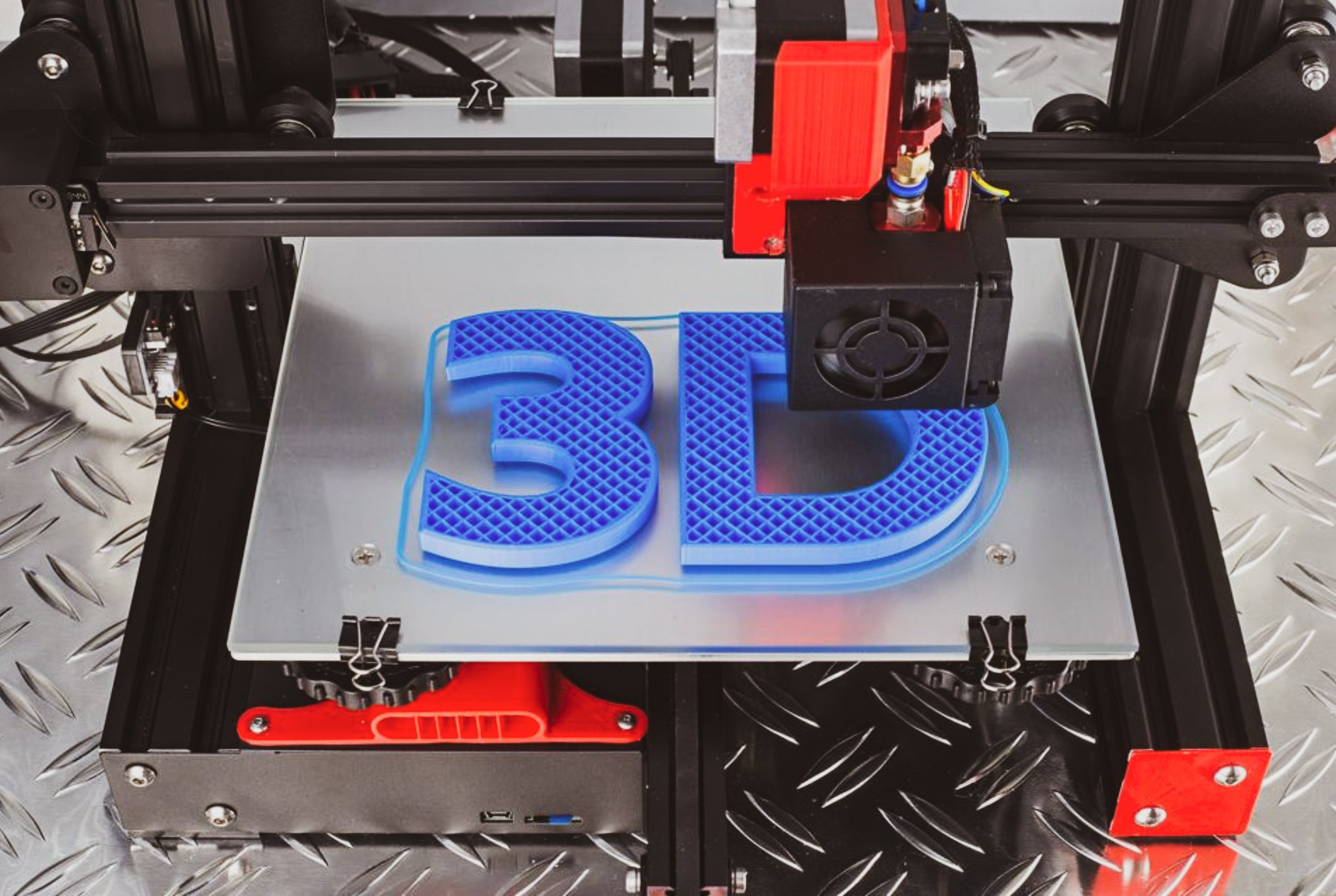
Innovation keeps flowing in Hemargroup. We have just introduced the TPU 3D printing to expand our prototyping solutions.
TPU is extremely flexible, which allows us to design and develop more sophisticated solutions in the electronic and mechanical industry.
Read the whole article to better understand the advantages of TPU and learn how at Hemargroup we introduced them in the prototyping and production processes.
What is TPU?
Thermoplastic polyurethane (TPU) is an elastic thermoplastic material formed by the polycondensation of a diisocyanate with one or more diols. The chemical nature of this chain influences the mechanical behaviour and chemical resistance of the material: the longer the chain, the more rubber-like the material becomes. Technically, it consists of linear segmented block copolymers composed of hard and soft segments and can be processable in the molten state. TPU material is used for the production of durable elastomer parts with additive manufacturing, which is the production of 3D objects layer by layer from a digitalised model. The 3D printing material enables prototyping of high functioning, durable and complex parts with the expected material properties found in an elastomeric material.
Like most elastomers, it is commonly used as a soft engineering plastic or as a replacement for hard rubber. For example TPU is often used for fabricating brackets, supports, gaskets and other kind of plastic flexible pieces. It can also be found in overprinted plastic parts because of its ability to provide superior grip or dampen vibration. It is similar to Thermoplastic elastomers (TPE), sometimes referred to as thermoplastic rubbers, which are a class of copolymers or a physical mix of polymers that consist of materials with both thermoplastic and elastomeric properties. However, TPU is better because it offers superior durability, especially for wear intensive parts.

Advantages of TPU
In 3D Printing, the most widely used plastic filament material is Polylactic acid (PLA), which is a thermoplastic polyester formally obtained by condensation of lactic acid with loss of water. This material has become the most popular for such use due to it being economically produced from renewable resources.
However, TPU presents a lot of advantages compared to the classic PLA because it is an extremely versatile material: more than any other thermoplastic elastomer, it can provide a considerable number of combinations of physical properties, making it extremely flexible and adaptable to multiple uses and for extended solutions.
What changes in the production of TPU pieces with 3D printing compared to PLA, is that during the print, temperature have to be higher, and some printing parameters have to be changed in order to regulate the flow and movement of the nozzle where the material comes out. Few changes to enable a clean print.
Let's have a look at its advantageous features:
- Elasticity and flexibility: the material offers an excellent elasticity and an exceptional elongation ratio also under low temperatures, which ensure durability, tear resistance and allow to extend and simplify the design of particular components as well as facilitate the coupling of multiple components.
- Excellent resistance to chemicals and abrasion: TPU is highly resistant to harsh conditions and keeps stable its shape up to 95°C. For this reason, TPU pieces are very suitable for applications which require resistance to such conditions.
- Waterproof: TPU pieces are highly resistant and durable to atmospheric agents.
- Exceptional impact resistance: its flexibility makes TPU also highly resistance to impacts and collisions, which makes it useful also for protection functions. These properties make it indeed a popular option for smartphone protectors and housings for other electronic devices.
- Good resistance to oil and greases: TPU has a good resistance also when it gets in contact with oils, grease and fuel. For example, gaskets used in automotive applications in the engine compartment or in industrial machinery are often made of TPU.
- Mechanical versatility: this kind of elastomer offers advantages also in prototyping on the mechanical side. Its versatility for different uses and shapes makes TPU suitable to create supports, brackets, homemade seals and other kind of pieces.
This makes it possible to extend and simplify the design of particular components and facilitates the coupling of several components. - Very suitable for medical applications: TPU has a lot of advantages for critical applications because no plasticiser components are needed. For instance, it is highly suitable for multilumen tubing for dialysis, ureter catheter, infusion lines or feeding tubes. Indeed, TPU is approved for use in human medicine, and it also react thermosensitively - this means that when the body temperature is reached, the tubes soften, so that a feeling of foreign bodies on the part of the patient is largely avoided. There is also the possibility of embedding X-ray contrasting strips in the tube wall, which on the one hand enables optical flow control and on the other hand allows the position of the tube in the body to be checked using X-ray scanners.
To sum up, this material allows to design different and extended solutions with broadens options.
Why a professional 3D Printing service is essential to your business
3D printing is very useful to manufacturing companies in the electronic and mechanical industry for creating tools and pieces. It is an innovation which fuels more innovation. 3D printing is inexpensive prosthetics, it allows the creation of spare parts, a rapid prototyping, the creation of personalized items and minimum waste manufacturing. It’s also an essential tool for prototyping and testing at the beginning of a project, when a low-volume production is needed. Let's have a look at the many advantages it has for a business in the hardware industry.

FAST PROTOTYPING
With a professional 3D Printer you can rapidly design, manufacture, and test a customized part in as little time as possible. Also, if needed, the design can be modified without adversely affecting the speed of the manufacturing process. Outsourcing this phase to professionals, could save you from heavy slowdowns of the process due to the shipping time and to the time required for instructing the third party company on how to print what is needed.

COST-EFFECTIVENESS
For small production runs and applications, 3D printing is undoubtedly the most cost-effective manufacturing process, because only 1 or 2 machines and fewer operators are needed to manufacture a part. There is far less waste material because the part is built from the ground up, not carved out of a solid block as it is in subtractive manufacturing and usually does not require additional tooling.

FLEXIBILITY
A 3D printer can create almost anything that fits within its build volume. The design is fed into slicer software and then printed with little or no change at all in the physical machinery or equipment. It allows the creation and manufacture of sophisticated geometries impossible for traditional methods to produce, such as hollow cavities within solid parts. Also, it allows the inclusion of multiple materials enabling an array of colors, textures, and mechanical properties to be mixed.

COMPETITIVE ADVANTAGE
Because of the speed and lower costs of 3D printing, product life cycles are reduced. You can improve and enhance a product delivering it in a shorter amount of time. Also, 3D printing allows the tangible demonstration of a new product to customers and investors instead of leaving it to their imaginations, therefore reducing the risk of lost information or miscommunication.

DIRECT TESTING & CORRECTION
As briefly mentioned, seeing a product on a screen is not comparable with actually touching and physically feeling a prototype. Also, a tangible prototype can be directly and rapidly tested and if flaws or inaccuracies are found, the CAD file can be modified and a new version can be printed right away.

RISK REDUCTION
A 3D printer allows you to mitigate risks in manufacturing because you can firstly verify product prototypes before starting out the final production. Tests and improvements can be done quickly. Investments in mass manufacturing without a proper prototyping testing can be potentially disastrous.

QUALITY
Traditional manufacturing methods can result in poor designs therefore poor quality prototypes. This can happen with subtractive or injection methods, where quality is not always assured. For this reason, 3D printing allows a constant monitoring of the process and the step-by-step assembly of the part or product, which guarantees enhancement of the design and better quality results.

ACCESSIBILITY
3D printing systems are much more accessible than traditional manufacturing setups. In comparison to the enormous expense involved with setting up traditional manufacturing systems, a 3D printing setup costs much less and is much easier. Also, 3D printing is almost completely automated, requiring little to no additional personnel to run, supervise, and maintain the machine.

SUSTAINABILITY
With 3D printing, fewer parts need outsourcing. This equals less environmental impact because fewer things are being shipped across the globe. Also, it creates a lot less waste material for a single part and 3D printing materials are generally recyclable.
Hemargroup pursues innovation
Hemargroup's Swiss-Made quality is well known in the international market. The company is growing and what leads us is our constant search for innovation and for better ways to make our work as more efficient as possible. Our team of engineers are experts in the prototyping, development and engineering of products and are committed to find the best solution for each need.
As a manufacturing company, we make sure to use best technologies and cutting-edge tools on the market to be able to deliver excellent products and the best service as possible. Owning a professional 3D printing allows us to develop customized prototypes and test them very quickly for a rapid development. From the first prototype to the mass production of your device, we aim to reduce your product's time to market, forecasting mass production and managing the end-to-end lifecycle. Recently, we introduced the 3D printing of TPU pieces. We offer three degrees of hardness: very soft (A88), medium soft (A98) and relatively hard (D58). The D58, for example, with a wall thickness of 3mm, can only be bent with very high force. Therefore, it offers high dimensional stability and impact resistance.
For more than 40 years, and in numerous technologically challenging industries, we have been a Swiss Excellence partner for the growth of our customers through product lifecycle management strategies and reliable electronic manufacturing services. Constantly updated on the latest technology trends, we support and enable your success from the latest product launch to reverse engineering and obsolescence management, thanks to our electronic manufacturing solutions, no matter your industry. From the development of your idea up to the mass production of your product, Hemargroup is able to assist you not simply as an EMS supplier but as a reliable partner, ready to grow and develop your project. We are therefore ready to support your needs, but also assist any customer in its European relocation, who is looking for a reliable and solid electronics manufacturing services partner.
Don't hesitate to contact us for more information or for requesting a quotation on our services.
.png)
